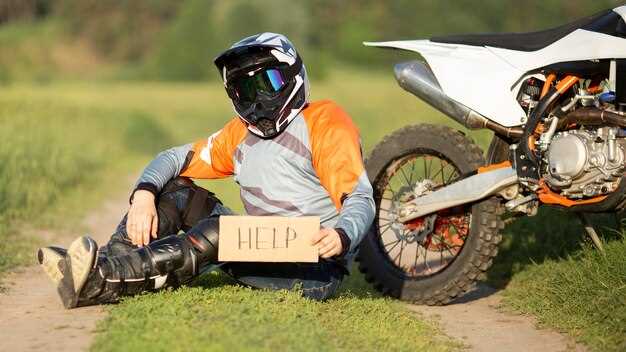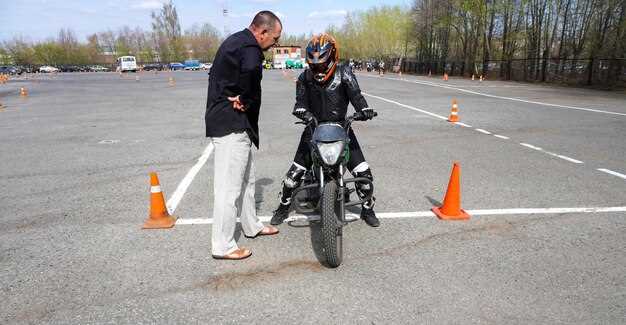
Amateur motorcycle racing is an exhilarating way for beginners to dive into the world of motorsports. The thrill of competition, the camaraderie among riders, and the challenge of mastering your machine make it an appealing pursuit for many. However, getting started can feel overwhelming without proper guidance. Understanding the fundamentals of racing not only enhances your experience but also contributes to your safety and success on the track.
Before you rev up your engine, it’s essential to grasp the basic concepts of motorcycle racing. Knowing the types of races available, the necessary gear, and how to prepare your bike can set you apart from other beginners. Unlike professional racing, amateur events offer a more accessible entry point, allowing you to learn at your own pace while still experiencing the adrenaline rush associated with the sport.
In this article, we’ll provide you with valuable tips that cover everything from selecting the right motorcycle to mastering racing techniques. By following these insights, you’ll be better prepared to embark on your racing journey, gain confidence on the track, and enjoy the exhilarating world of amateur motorcycle racing.
Choosing the Right Motorcycle for Beginners

When it comes to entering the world of amateur motorcycle racing, selecting the right motorcycle is crucial for beginners. The type of motorcycle you choose will significantly impact your learning curve, comfort, and overall enjoyment of the sport.
First and foremost, consider your skill level and riding experience. For beginners, it is advisable to select a motorcycle with a smaller engine displacement, typically between 250cc and 500cc. These bikes are easier to handle, allowing novice riders to build confidence without being overwhelmed by power.
Lightweight motorcycles are also a great choice for beginners. A bike that is easy to maneuver will help you practice turning, stopping, and accelerating without feeling too heavy or cumbersome. The weight of the motorcycle plays a vital role in the overall riding experience.
Furthermore, it’s essential to focus on the ergonomics of the motorcycle. Ensure that the bike fits your body size and shape. A comfortable riding position reduces fatigue and allows for better control, especially during races. Before making a purchase, sit on different models to find what feels most comfortable for you.
Another important factor is the motorcycle’s rode features. Look for features that enhance safety, such as anti-lock braking systems (ABS) and an easily accessible clutch and throttle. These attributes can significantly reduce the risk of accidents and provide a smoother riding experience.
Finally, consider the availability of parts and support for the motorcycle. A model with a strong community and a good network of parts availability ensures that you can get help and repairs when necessary. This support is invaluable for beginners who may face challenges as they learn.
In summary, selecting the right motorcycle as a beginner revolves around choosing a model that is lightweight, manageable, comfortable, and supported by an active community. Making a thoughtful decision will set a solid foundation for your journey into amateur motorcycle racing.
Safety Gear and Equipment You Can’t Ignore

For beginners in amateur motorcycle racing, choosing the right safety gear is crucial. The right equipment not only enhances performance but also significantly reduces the risk of injury. Start with a high-quality full-face helmet. This is the most critical piece of gear, as it protects your head in case of an accident. Look for helmets that meet or exceed safety standards such as DOT or Snell certifications.
Next, invest in a well-fitted racing suit made from durable materials like leather or high-strength textiles. A proper racing suit should provide abrasion resistance and protect against impacts. Make sure it has appropriate padding in critical areas, such as shoulders, elbows, and knees, to cushion against falls.
Don’t overlook gloves, as they are essential for grip and protection. Choose gloves designed for racing that offer a good balance of flexibility and strength. Look for features like reinforced seams and knuckle protection to safeguard your hands in case of an accident.
Boots are another vital piece of your gear. Riding boots should provide ample support and protection for your ankles. Select boots with reinforced toes and heels, as well as soles designed for grip, while being comfortable enough for extended wear during races.
Lastly, consider additional protective gear such as back protectors and chest guards. These offer extra layers of safety, especially for beginner racers who may be more prone to falls as they hone their skills. Before hitting the track, ensure all your safety gear is in good condition and properly fitted to maximize protection.
Understanding Track Etiquette and Racing Rules
As a beginner in amateur motorcycle racing, mastering the track etiquette and racing rules is essential for a safe and enjoyable experience. Knowing how to behave on the track not only helps you stay safe but also fosters a respectful environment among fellow racers.
First and foremost, familiarize yourself with the specific rules of each track. Different venues often have unique regulations and guidelines that must be adhered to. Reading the rulebook provided by the track or event organizers is crucial before your first race. Always be aware of flags used during races, as they communicate important information about track conditions and incidents.
When you are on the track, remember that overtaking requires caution and awareness. Always signal your intentions clearly to other riders, and execute passing maneuvers only when it is safe to do so. Use the racing line effectively, respect your fellow competitors, and maintain a safe distance to prevent collisions.
It is also vital to remain calm and composed during practice and race sessions. Avoid aggressive riding behaviors, which can lead to unnecessary accidents. If you find yourself in a situation where you need to slow down or exit the track, do so smoothly and signal to others by raising your hand.
After races, participate in post-race discussions with fellow racers. This practice helps build a sense of community and allows you to learn from each other’s experiences. Respect the decisions of track officials, as they are in place to ensure everyone’s safety and uphold the integrity of the sport.
In summary, being a considerate and knowledgeable racer enhances not only your experience but that of everyone on the track. By understanding and applying track etiquette and racing rules, you can contribute to a positive racing atmosphere while advancing your skills as a beginner.

